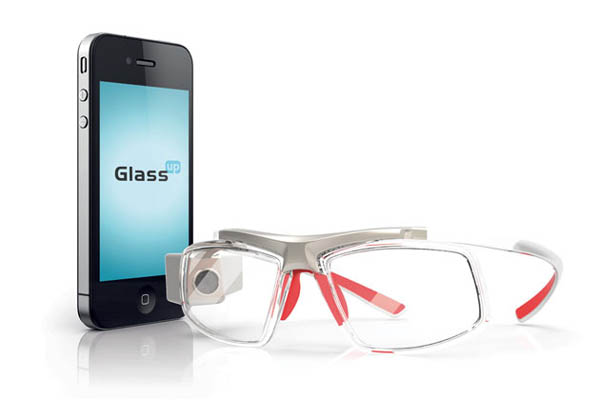 GlassUp, a cheaper competitor to Google Glass will go on sale at $299, Glassup might just be some competition that Google wouldn’t want in its way when Google Glass goes on retail sale. Google Glass was made available to select developers at $1500.
GlassUp, a cheaper competitor to Google Glass will go on sale at $299, Glassup might just be some competition that Google wouldn’t want in its way when Google Glass goes on retail sale. Google Glass was made available to select developers at $1500.
GlassUp aims to give customers a less-expensive alternative to Google Glass with its own pair of augmented reality specs.
Italian company GlassUp was recently added to crowdfunding site Indiegogo and has already raised US$27,000 of its US$150,000 goal.
Similar to Google Glass, the eyewear works with your smartphone and makes it easy to see emails, text messages, Facebook updates and news right in front of your eyes.
Its maker, Gianluigi Tregnaghi, says he created GlassUp two years ago – before Google ever announced its Glass product.
It’s not the same, of course, as Google’s much-hyped product: The information is displayed differently and the price is significantly cheaper – US$399 (NZ$480) compared to Google Glass’ US$1500 (NZ$1800) asking price. And there are fewer features.
The company is calling GlassUp a “receive only” device, which means users can’t respond to text messages and emails or even take photos.
The information in the smartphone is sent to the glasses via Bluetooth. The notifications are displayed on GlassUp’s lenses, projected in front of the user. Similar to Google Glass, the notifications are based on which apps the user downloads.
But unlike Google Glass, it “projects the information close to the centre of vision (like looking through a windshield), which causes less strain on the wearer’s eye,” the company says.
Battery life averages about 150 hours of standby mode and a prescription lens option could come in the near future.
The company says it has already been getting “trademark attention” from Google, which has asked GlassUp to change the product name.
Whether or not the project is fully funded, the company said backers will receive the device after it goes into production in February of next year.
… This article was originally published on Mashable.














